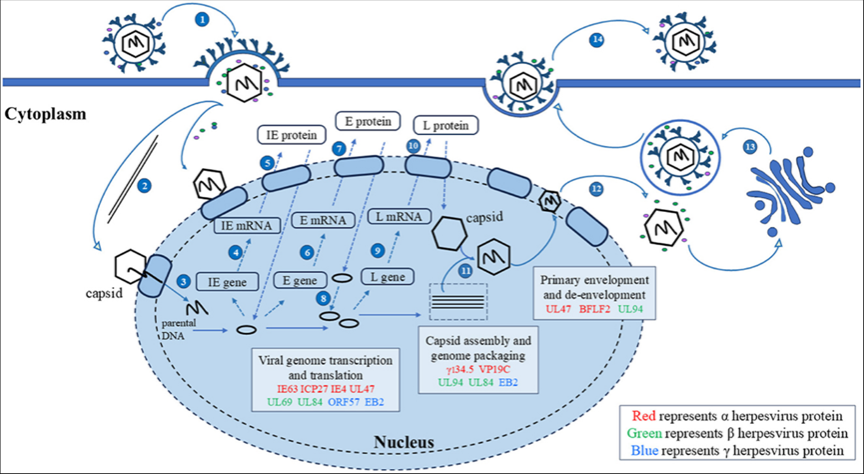During viral infection, the transport of various proteins between the nucleus and cytoplasm plays an important role in the viral lifecycle. Shuttling proteins are key factors in the transmission of nucleocytoplasmic information within cells and usually contain nuclear localization signals and nuclear export signals to mediate correct positioning for themselves and other proteins. The nucleocytoplasmic transport process is carried out through the nuclear pore complex on the nuclear envelope and is mediated by specific protein carriers. The viral proteins that function through nucleocytoplasmic shuttling in herpesviruses have gradually been identified as research advances. This article provides an overview of how shuttling proteins utilize nucleocytoplasmic shuttling signals and nuclear transport receptors for nucleocytoplasmic transport, as well as discusses how herpesvirus shuttling proteins enhance the effective infection of viruses by affecting their lifecycle and participating in innate immunity, this review provides a reference for understanding the pathogenesis of herpesvirus infection and determining new antiviral strategies.
The related research has been published in the journal Frontiers in Microbiology under the title “The functions of herpesvirus shuttling proteins in the virus lifecycle”, and is accessible at the following DOI: https://doi.org/10.3389/fmicb.2025.1515241. This work was supported by grants from China Agriculture Research System of MOF and MARA (CARS-42-17) and the Program Sichuan Veterinary Medicine and Drug Innovation Group of China Agricultural Research System (SCCXTD-2025-18).


